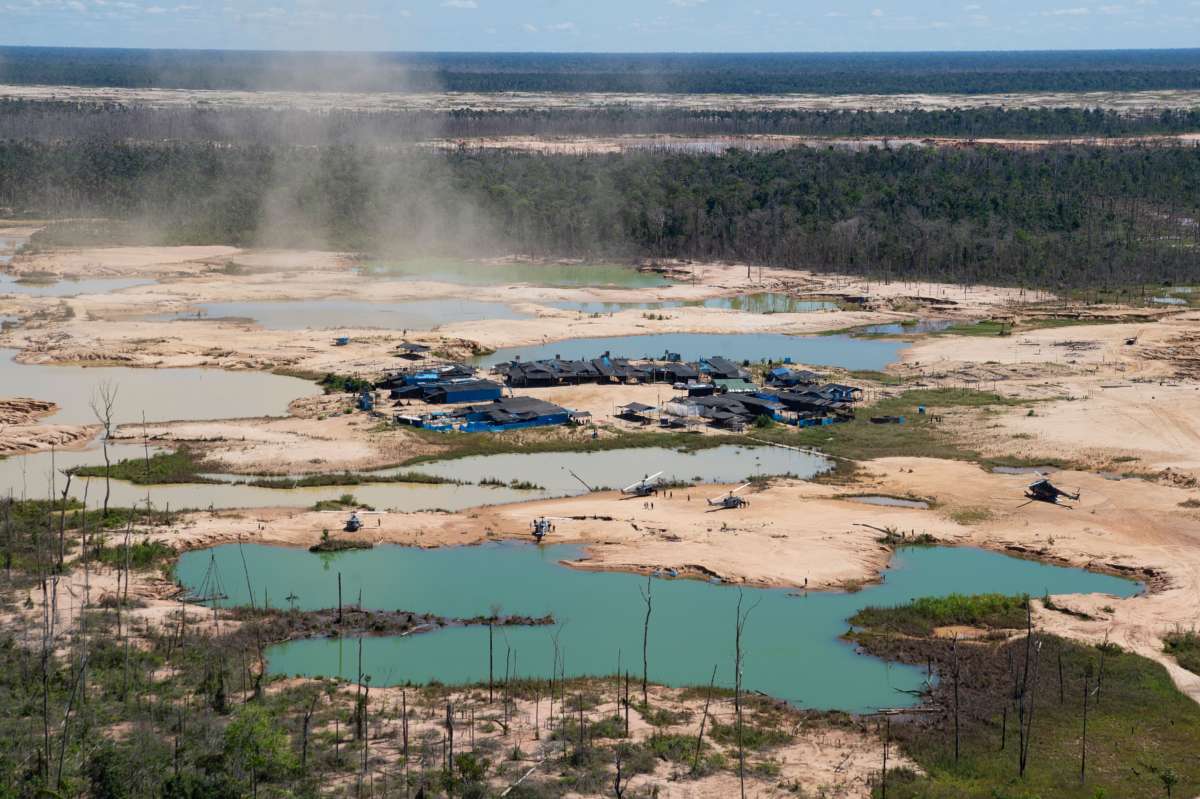Many of us recently watched in horror as headlines showed images of fires in the Amazon, and revealed that deforestation practices had preceded the burning. Following such devastating news came a predictable question: “What can I do?” As a scholar who studies alternatives to deforestation, I offer an unconventional answer: This holiday season, let’s push for transparency in gold jewelry supply chains as a strategy to reduce Amazonian deforestation.
My unconventional solution is grounded in both research and experience. After more than a decade working in Brazil on alternatives to deforestation, it became clear how our choices (and purchases) have global consequences. As a professor of environmental science and studies at DePaul University, I now help students make these connections using gold (and mining) as a case study.
Last December, I co-led a trip connecting 26 DePaul University students with miners in the Peruvian Amazon. One of my most poignant memories in Madre de Dios, Peru, was standing beside a recently mined area bracketed by rainforest on three sides. It looked more barren desert than lush tropical forest. Some of the equipment used for gold mining was temporarily abandoned in the midst of this landscape, but with the high price of gold, the miners would likely return soon. After speaking with individuals engaged in mining, a student peppered me with questions.
“How could the miners consciously choose to destroy this area?” she said. In return, I asked her where her gold jewelry was from. She admitted she had no idea. Of course, she’s not alone.
What many don’t know is that recent deforestation in the Peruvian Amazon has been driven by demand for gold. The price of gold is currently $1,467.76 per ounce at the time of writing, a dramatic increase from approximately $400 per ounce in 2000. Gold for jewelry is responsible for around 50 percent of global demand for gold.
In the last eight years, more than 249 square miles of forest have been cleared for gold mining in the Peruvian Amazon with more than 70 square miles in the last two years (2017 and 2018).
Yet deforestation is not the only impact of gold mining. The use of mercury in mining is problematic for the health of those who extract the gold. Since Amazonian gold is found in flakes in the soil below the rainforest, mining entails first removing the forest. Since liquid mercury forms a stable mixture (amalgam) with gold, it is used to pull gold flakes out of the sediment, creating mercury-gold “nuggets.” Heating the nuggets forms purified gold and releases mercury vapor.
Mercury vapor can be inhaled, and contaminates soil and water (above and below ground). Unfortunately for the health of the miners, mercury vapor is readily absorbed in the lungs and diffused (spread) through the blood (thus getting to all the body’s organs). Chronic mercury exposure, common in miners, can lead to tremors, kidney dysfunction, and various neurocognitive and behavioral disturbances.
The gold extraction process is a lose-lose situation. It is problematic for the environmental impact — leading to environmental mercury contamination. If the mercury is not inhaled, the mercury vapor is deposited on water and lakes, working its way through the food chain and often into human diets, especially via fish.
To be sure, mining provides economic opportunities for individuals and families, but at the expense of long-term sustainable economic opportunities and the health of both those who mine and those who live in the region. Moreover, gold is not the only factor contributing to deforestation in the Amazon. Agriculture, logging and road development also contribute to and facilitate deforestation in the Peruvian Amazon and clearing pasture for cattle is the major driver in the Brazilian Amazon. Still, the gold issue is one Americans can make an impact on.
As consumers and gift-givers, we have the opportunity to create environmental and social change. If you must buy gold this December, ask jewelers and other retail outlets if they can assure you that their gold is not associated with deforestation. Many jewelers (e.g. Brilliant Earth, Susan Wheeler Design, Tiffany & Co.) will be happy to talk about their commitment to environmentally and socially responsible gold sourcing or their efforts to increase supply chain transparency. Some may refuse to answer the question or claim ignorance, as was the case when one of my research students asked different mall jewelry retailers. However, asking is an important first step.
For companies who are not yet committed to zero-deforestation gold, a small percentage of engaged consumers can help shift industry practices. While our obsession with gold jewelry is currently contributing to Amazonian deforestation, our love of socially and environmentally sourced jewelry may be one step toward Amazonian conservation.
Join us in defending the truth before it’s too late
The future of independent journalism is uncertain, and the consequences of losing it are too grave to ignore. To ensure Truthout remains safe, strong, and free, we need to raise $43,000 in the next 6 days. Every dollar raised goes directly toward the costs of producing news you can trust.
Please give what you can — because by supporting us with a tax-deductible donation, you’re not just preserving a source of news, you’re helping to safeguard what’s left of our democracy.
